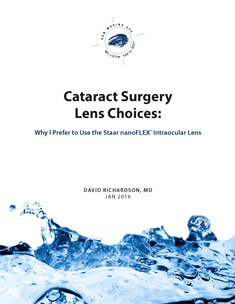There is a war being waged in ophthalmology with all the zeal of a religious war. And, like a religious war the two camps each believe with all their heart and soul that they are right and doing what is best. So what could make an IOL so controversial?
Cataract surgery has a long history of controversy. Early cataract surgery shared a complication of modern surgery: blindness. Whereas this is a rare complication of modern surgery, it was relatively common in early attempts to remove the cataract. What was probably uncommon was finding someone willing to perform cataract surgery. This was due to the Code of Hammurabi which prescribed a very harsh penalty for cataract surgery gone wrong: cutting off the surgeon’s hands. Compared to the fee for cataract surgery (ten shekels of silver – not even gold!) the risks do seem to have outweighed the benefits to the ancient cataract surgeon.
Fast forward to the mid-1950’s: Dr. Harold Ridley first’s attempts to place a lens inside the eye after removing cataract surgery. He was severely ostracized by the medical community for what was seen as reckless behaviour. Here in the US the FDA was even ready to ban the use of IOLs until Robert Young (the actor who played Marcus Welby, M.D.) testified in favor of the IOL.
So what is the current source of online and in-print flame wars among otherwise professional and staid ophthalmologists?
Blue light.
Huh?
Yep, blue light. Or, rather, the blocking of this light with a yellow-tinted filter. The correct way of thinking about these filters is not that the filter adds yellow, but rather that it absorbs blue (when blue is subtracted from the visible light spectrum an object takes on a yellow tint).
Skiers have known for years that blocking blue light with a yellow tint increases contrast sensitivity on the slopes. “Blue blockers,” or yellow-tinted sunglasses are also very popular with those involved in watersports. There is even a pair of glasses advertised in some magazines to cut glare from nighttime driving that has incorporated a yellow-tint.
So, if filtering the blue spectrum of light provides the benefits mentioned above, why wouldn’t a blue light filtering IOL be a good idea? Indeed, the major manufacturer of IOLs in the US (Alcon) does not offer any of its popular single-piece IOLs without a blue-filtering pigment.
Herein lies the controversy. Not everyone agrees that filtering blue light is a good idea. It’s one thing to put on a pair of sunglasses with a yellow tint. But, should we really be surgically implanting these lenses in the eye after cataract surgery?
In my next three posts I will summarize the support for and against blue light filtering IOLs.
© 2009 David Richardson, MD







Leave a Reply